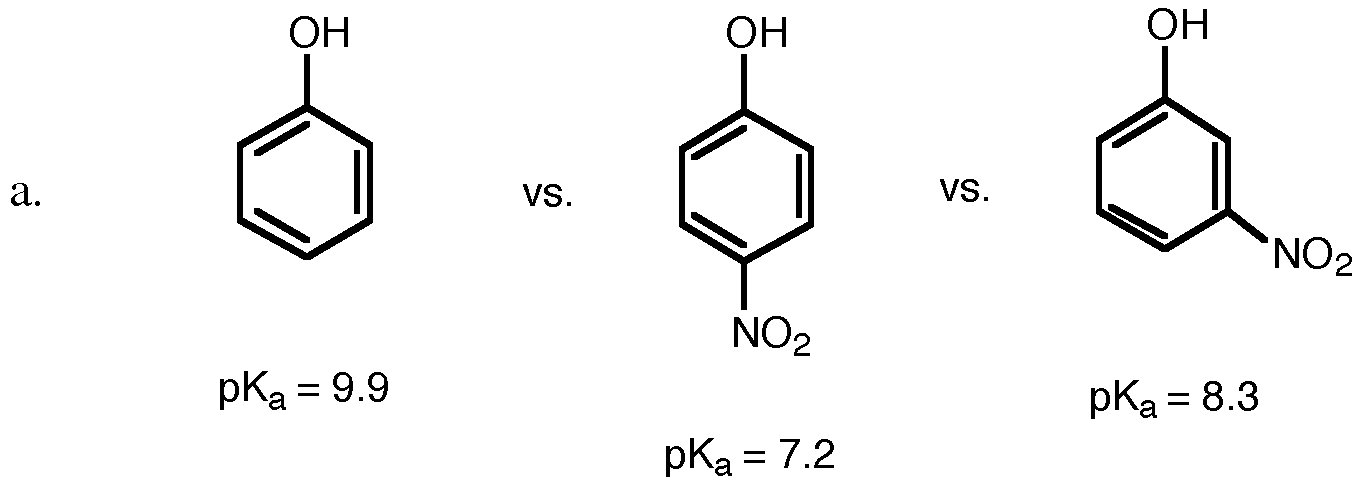Organic Chemistry II |
 |
|
Professor Carl C. Wamser |
||
Chem 335 - Winter 2004 |
Chapter 11 Workshop |
![]()
Organic Chemistry II |
 |
|
Professor Carl C. Wamser |
||
Chem 335 - Winter 2004 |
Chapter 11 Workshop |
![]()
![]()
1. The following are some of the structures proposed for benzene over the years. All of them have been synthesized and are known to revert to benzene when warmed. With the help of arrows show how each of these rearranges to benzene. How would the NMR of each of these differ from that of benzene?
2. Provide reasonable explanation for the following observations:
a. Pyridine and pyrrole exhibit the properties of typical aromatic compounds. Pyridine is commonly used as a base; the pKa of the corresponding conjugate acid is 5.29. On the other hand, pyrrole is not basic; the pKa of the corresponding conjugate acid is -4.4.
b. Despite the ring strain, cyclopropenium ion represents one of the most stable carbocations known. Explain this stability. Predict chemical properties for cyclopropene and cyclopropenone.
c. Explain the proton chemical shifts for the following compound: 9.0 ppm and -3.0 ppm
3. The compounds shown below exhibit the properties of typical aromatic systems.
a. Propose the geometry at each atom in the rings.
b. Propose hybridization schemes for each atom in the rings.
c. Specify the bonding, using lines for sigma bonds, showing overlapping p
orbitals for pi bonding, and locating the nonbonding electrons.
4. Consider the cyclooctatetraene dication, i.e., COT from which two p electrons have been removed. Provide a diagram of the energy levels of the pi molecular orbitals of the dication showing how they are occupied by the pi electrons and predict whether the system will be aromatic or antiaromatic.
5. Explain the differences in acidity.

b.
Materials adapted from:
Peer-Led Team Learning: Organic Chemistry, 1/e
Jack A. Kampmeier, University of Rochester
Pratibha Varma-Nelson, St. Xavier University
Donald Wedegaertner, University of the Pacific
Prentice-Hall, 2001, ISBN 0-13-028413-0
http://www.sci.ccny.cuny.edu/~chemwksp/OrganicChem.html